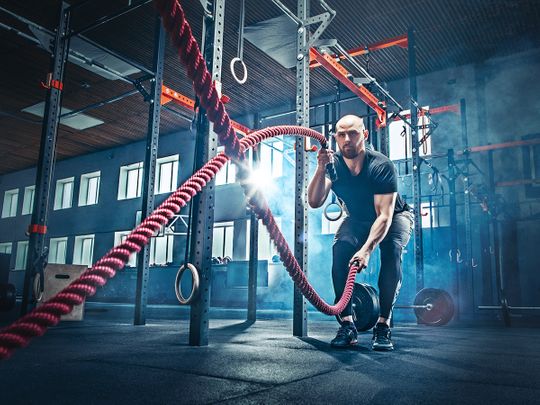It’s difficult to overstate the importance of our core in both day-to-day life and athletic endeavours.
“Strong, stable core muscles help effectively and efficiently coordinate movement to your arms, legs and spine,” explains personal trainer Adam Fulat. “This means less chance of injuries, better balance and coordination, improved performance in sports and more importantly better posture.”
There are dozens of various core exercises that can be performed, and Fulat says they can be categorised into a few groups.
The dead bug
These work the traverse abdominals, which are located on either side of the body. “They act as stabilisers to the pelvis and the lumbar spine and prevent improper movement.”
Cross body mountain climber
This exercises the internal and external obliques that extend diagonally from the ribs to pelvis. “Having firm obliques not only looks good but also supports your back and overall posture.”
Reverse crunch
Works the rectus abdominals, or six pack. “The main function is moving the trunk backwards, forwards and sideways.”
Superman Exercises
The erector spinae, which is located along the spine from head to pelvis. “The erector spinae allows the spinal joints the ability to extend, laterally flex and rotate.”
Dynamic versus static
Core exercises can be broadly split into two groups: dynamic movements such as the aforementioned reverse crunch and static holds like planks. Assuming an otherwise healthy lifestyle in terms of diet and sleep, how do these movements offer different benefits?
“For a combination of functionality, strength and aesthetics, I recommend including both variations in your routine,” explains Fulat. “Both the crunch and the plank engage the rectus abdominis and the obliques. However, the plank also targets the erector spinae, glutes, hip flexors, quads and deltoids.”
However, he adds that while crunches can work wonders for the core, “the plank provides optimal results when it comes to aiding sports performance, rehab and general fitness”.
How to get a six pack
It’s one of the most desirable physical features for anyone taking their fitness seriously, but aside from a good nutritional plan, there’s a lot of hard work required for a six pack. “I recommend working your abdominal muscles three to four times a week,” says Fulat. “It’s important to give your muscles time to heal in between workouts.”
Cardio is also important. “A big part of the fat-burning process comes from cardiovascular exercise,” he says. However, he adds that it’s important not to overdo the cardio – “You could end up burning the calories you need for building muscle and recovery rather than just burning fat.”
Finally, Fulat adds that you can’t get a six pack through working just your core. “Train your whole body, especially the legs. Compound movements are a must – they fire up more muscles throughout your entire core. I highly recommend incorporating squats, lunges, and dead lifts into your plan.”
Combatting core misconceptions
As a personal trainer, Fulat often encounters a number of mistaken beliefs when meeting new clients. The most common is that crunches are the best core-strengthening exercise. “There is no [one] great movement for the core – they all serve a different purpose. However, try adding weights to your movements or performing them on a stability ball for more muscle recruitment.”
Another big misconception he finds is the idea that you need to train your core every day. “Your core muscles need to recover just like any other muscle in your body. Two to three core workouts a week are more than enough to build a stronger or more detailed six pack.”
Fulat also sees that a lot of people believe doing core exercises will burn belly fat. “Firstly, you cannot spot reduce belly fat! Your body chooses fat cells across the whole body when exercising. That burning sensation around your core during abdominal movements is caused by a lactic acid build-up in the muscle.”
He highlights five long-term benefits of an effective core routine: “It will give you a good posture; healthy back [see box]; prevent injuries; improve balance and stability; and allow you to perform basic everyday movements more safely.”
1. Forearm Plank
2. Reverse Crunch
3. Dead Bug
4. Glute Bridge
5. Side Plank
“By performing movements such as the ones above, you will increase the amount of weight your lower back can comfortably handle, which means it will be better equipped to handle the same stress from your workouts and everyday life without getting as achey, whilst avoiding the risk of injury.”


